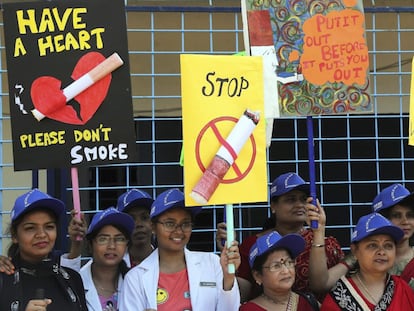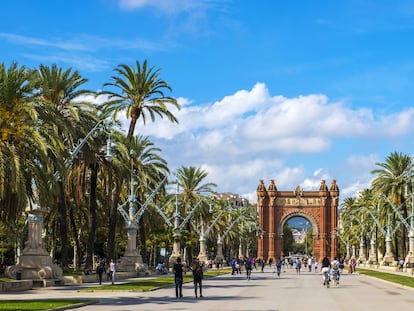Tell me where you live and I’ll tell you your health risks
A new IADB documentary calls attention to how the cities and neighborhoods where we live affect our life expectancy


In a visit to the doctor, we’re used to answering a series of questions: what is your diet? How much exercise do you do? Are there any diseases that run in your family? But perhaps that list should include another question that gives important information about our health: what neighborhood do you live in?
From the material of our house to the city where we live, everything about our homes is a determinant of health. “Having a dirt floor, bad ventilation or little sanitation in a house is linked to gastrointestinal and respiratory diseases,” says Carolina Piedrafita, housing specialist and coordinator of the City Laboratory of the Inter-American Development Bank. “What surrounds your house, like green spaces, nearby public transportation and air quality, also has an effect, as well as how far you live from health centers, schools and even supermarkets,” she adds.
All those factors have something in common; they are determined by inequality, a growing phenomenon in Latin America that has made our cities unhealthy. In the region, the expert says, two phenomena have combined. One is that we are concentrated in cities. “In Latin America, 80% of the population lives in cities. It is the most urbanized region of the planet,” she says. At the same time, we have several of the most unequal places. “Of the 20 countries with the greatest inequality, eight are in the region.”
Those symptoms were reflected in the COVID-19 pandemic. “When we saw maps of the city, we saw that the poorest, most segregated parts were the parts with the most cases and deaths. And it isn’t a coincidence that a region that has 8.4% of the global population is where there have been 27% of the deaths,” says Piedrafita in a recent IADB documentary, Health and City: Your Postal Code Matters More than Your Genetic Code.
City and health: a Latin study
Ana Diez Roux, epidemiologist and dean of Drexel University’s Dornsife School of Public Health, reached several conclusions after leading Studying Urban Health in Latin America (SALURBAL), a study that began in 2017. The project brought together information from 11 countries and around 400 cities from the region to examine how cities relate to our health.
“When it comes to health, cities are heterogenous. There is a tendency to generalize and say that the urban is better or worse than the rural, but between cities there are many differences,” she says. She also notes that the size of the city is not the only factor in health. There may be differences between neighborhoods in a single city. But in every city, social inequities have an impact on life expectancy. And the more inequality a city has, the worse the effects on health.
In 2019, SALURAL published a study in The Lancet that analyzed the relationship between life expectancy and birthplace, taking as samples six big cities: Buenos Aires, Argentina; Belo Horizonte, Brazil; Santiago, Chile; San José, Costa Rica; Mexico City, Mexico; and Panama City, Panama. They compared mortality rates, population, socioeconomic status, housing overcrowding and education.
Within the same cities, the report says, life expectancy differs up to 20 years depending on those factors. “For men, the average life expectancy varied from a minimum of 69 years old in Mexico City and a maximum of 76 in San José,” the study concludes. It also notes that “a greater socioeconomic status in the area is associated with a greater life expectancy, especially in Santiago.”
Planning healthy cities
Doctors look after our health, but architects and urban planners also play a role in it. Both experts agree that politicians, urbanists, sociologists, social workers and public health experts should be involved in city planning.
When Diez is asked about the three most urgent steps for healthier Latin American cities, she doesn’t hesitate to answer: “The dependence on cars should decrease, thinking in transportation that is both active and public.” It isn’t just about cars’ impact on air quality: cities, she says, should allow people to walk, bike and feel safe. “People also shouldn’t spend hours on transportation,” she says, as it has been shown that long commutes can affect mental health.
She also points out the importance of decreasing social inequality, “improving access to health and dignified work and improving income distribution.” Finally, she mentions health interventions in the most marginalized neighborhoods, “from overcrowding in houses, to parks with green spaces, to well-lit public spaces where people can feel safe.”
Sign up for our weekly newsletter to get more English-language news coverage from EL PAÍS USA Edition
Tu suscripción se está usando en otro dispositivo
¿Quieres añadir otro usuario a tu suscripción?
Si continúas leyendo en este dispositivo, no se podrá leer en el otro.
FlechaTu suscripción se está usando en otro dispositivo y solo puedes acceder a EL PAÍS desde un dispositivo a la vez.
Si quieres compartir tu cuenta, cambia tu suscripción a la modalidad Premium, así podrás añadir otro usuario. Cada uno accederá con su propia cuenta de email, lo que os permitirá personalizar vuestra experiencia en EL PAÍS.
¿Tienes una suscripción de empresa? Accede aquí para contratar más cuentas.
En el caso de no saber quién está usando tu cuenta, te recomendamos cambiar tu contraseña aquí.
Si decides continuar compartiendo tu cuenta, este mensaje se mostrará en tu dispositivo y en el de la otra persona que está usando tu cuenta de forma indefinida, afectando a tu experiencia de lectura. Puedes consultar aquí los términos y condiciones de la suscripción digital.
More information
Archived In
Últimas noticias
Most viewed
- Sinaloa Cartel war is taking its toll on Los Chapitos
- Oona Chaplin: ‘I told James Cameron that I was living in a treehouse and starting a permaculture project with a friend’
- Reinhard Genzel, Nobel laureate in physics: ‘One-minute videos will never give you the truth’
- Why the price of coffee has skyrocketed: from Brazilian plantations to specialty coffee houses
- Silver prices are going crazy: This is what’s fueling the rally










































